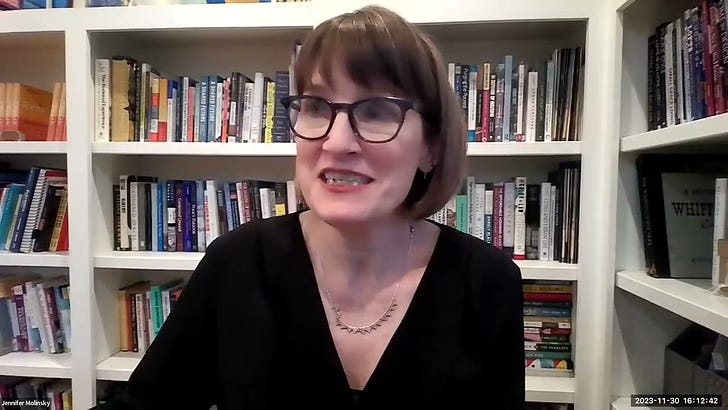When you call Social Security, expect to wait even longer
Austere administrative budgets have crippled the agency's ability to deal with the public
Few government agencies touch the lives of more Americans than the Social Security Administration — the agency pays $1.4 trillion in benefits to more than 71 million people every year.
But Social Security has been grappling with a customer service mess that threatens to grow worse because of the federal budget deadlock and a possible government shutdown early next year. The problems include long wait times on the agency’s toll-free phone line, a large backlog in disability applications and controversial clawbacks of overpayments to low-income and disabled beneficiaries.
Many of the problems stem from austere administrative budgets imposed by Congress over the past decade. Since 2011, congressional cuts to the agency’s customer service budget total 17 percent after adjustments for inflation, and staffing fell to a 25-year low last year, according to an analysis by the Center on Budget and Policy Priorities, a research and policy organization. At the same time, the number of beneficiaries rose by 22 percent over the past decade.
The current budget battle in Congress could worsen the situation. The Biden administration has requested a $1.3 billion increase in the S.S.A.’s customer service budget for next year, but House Republicans have proposed a $250 million cut in that spending. Decisions about federal spending have been pushed into early 2024 under an agreement reached last month.
The funding problems come while the S.S.A.’s leadership is in transition. President Biden has nominated Martin O’Malley, a former governor of Maryland and a former presidential candidate, as the agency’s permanent director, and Mr. O’Malley is awaiting Senate confirmation. He would replace Kilolo Kijakazi, who has served as acting director since July 2021, when the president fired Commissioner Andrew Saul, an appointee of President Donald J. Trump.
S.S.A. commissioners don’t talk with reporters very often, but I interviewed her for a column on the agency’s customer services woes that appears this weekend in the New York Times.
Dr. Kijakazi pointed to several areas of progress during her tenure, including re-establishing walk-in traffic at the agency’s 1,230 field offices after a pandemic shutdown, using this year’s $707 million increase in customer service funding to add 7,900 employees and, after years of troubled relations, reaching contract agreements with the three unions that represent the S.S.A. work force.
But she added that the administrative budget problems remained a central issue.
“It will take years of sustained, sufficient funding and collaboration both within the agency and with outside partners for the agency to recover from a work force and service crisis that was years in the making,” she said.
Meeting the housing challenges of an aging population
Over the next ten years, the U.S. population over the age of 75 will increase by 45 percent, and the sharpest growth will be among baby boomers who will begin entering their 80s in this decade.
As the population of older adults swells, so too does demand for housing that is both affordable and able to accommodate their changing needs. Millions of older adults are cost burdened, and homelessness is on the rise. Looking forward, the urgent need for affordable housing will continue to grow, not only because of the increasing number of older adults, but because of widening inequality and the challenge of providing both housing and care for this surging population.
Earlier this week, I moderated a panel discussion of a new report on housing older adults released by the Joint Center for Housing Studies of Harvard University. Joining me on the panel were:
Elizabeth Chen, Massachusetts Secretary of Elder Affairs
Robert Kramer, Co-founder and Strategic Advisor, National Investment Center for Seniors Housing & Care (NIC)
Jennifer Molinsky, Project Director, Housing an Aging Society Program, Harvard Joint Center for Housing Studies
Meghan Rose, General Counsel and Chief Government Affairs Officer, LeadingAge California
You can listen to the webinar using the video player above, or by clicking this link. (The discussion begins around the 20 second mark ono the video.)
What I’m reading
Four lucrative tax deductions that seniors often overlook . . . Worker shortages could worsen states’ waiting times for Medicaid home care services . . . More states require high school financial literacy classes . . . New fiduciary rule could rein in use of adviser-like titles . . . Is it a good thing when neighbors are all older?
Retirement Reboot takes top honors in personal finance competition
The Society for Advancing Business Editing and Writing (SABEW) picked my book Retirement Reboot one of the top three personal finance books of the year in its annual Best in Business Book Awards.
Retirement Reboot was named as one of two finalists in SABEW’s Investing and Personal Finance category.
Retirement Reboot walks readers through a short course of decisions that you can make now to improve your financial security in retirement —even if it’s just a few years away.
You’ll learn just how critical it is to make a retirement plan – and the critical importance of timing your retirement. How to optimize Social Security and Medicare benefits. How to build savings – even late in the game. I also explore ways to tap home equity, how older workers should approach career management and financing long-term care needs.



